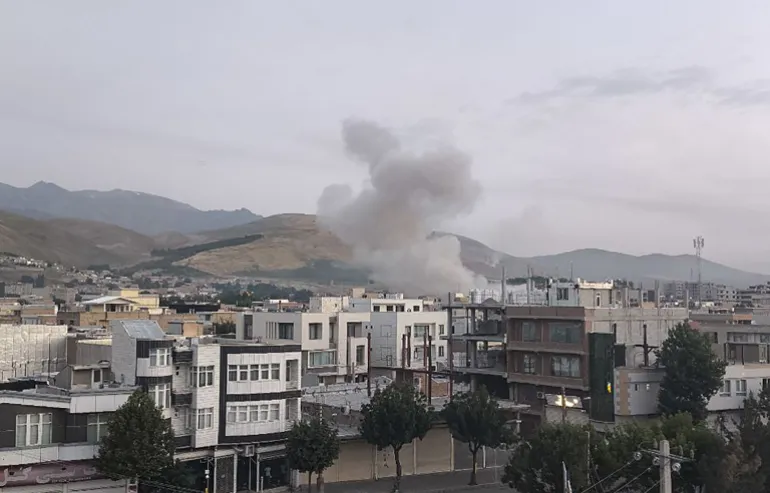- Courses
- GS Full Course 1 Year
- GS Full Course 2 Year
- GS Full Course 3 Year
- GS Full Course Till Selection
- Answer Alpha: Mains 2025 Mentorship
- MEP (Mains Enrichment Programme) Data, Facts
- Essay Target – 150+ Marks
- Online Program
- GS Recorded Course
- NCERT- First Ladder
- Polity
- Geography
- Economy
- Ancient, Medieval and Art & Culture AMAC
- Modern India, Post Independence & World History
- Environment
- Governance
- Science & Technology
- International Relations and Internal Security
- Disaster Management
- Ethics
- Current Affairs
- Indian Society and Social Issue
- CSAT
- 5 LAYERED ARJUNA Mentorship
- Public Administration Optional
- ABOUT US
- OUR TOPPERS
- TEST SERIES
- FREE STUDY MATERIAL
- VIDEOS
- CONTACT US
Challenges Faced by Indian Cities
Challenges Faced by Indian Cities
05-11-2024
- On 31st October 2024, World Cities Day was celebrated to emphasize the importance of international cooperation in promoting sustainable urbanization and addressing its associated challenges.
- Theme of World Cities Day 2024: ‘Youth Climate Changemakers: Catalysing Local Action for Urban Sustainability’.
- In 2013, the United Nations General Assembly officially designated October 31 as World Cities Day. It was 1st celebrated in 2014 in response to the growing challenges of rapid urbanization.
- The global urban population has reached approximately 4.7 billion, constituting 57.5% of the total population and is expected to double by 2050.
- The United Nations forecasts that the urban population will likely rise to 68% by 2050.
Key Urban Challenges Globally
- Climate Change Impact: Cities face severe environmental challenges, particularly from climate change.
- Sustainable Development Progress: Despite efforts toward the Sustainable Development Goals (SDGs), cities struggle with poverty, inequality, and environmental degradation.
- World Cities Day aligns with the UN’s SDG 11: “Make cities and human settlements inclusive, safe, resilient, and sustainable.”
- Intensified Challenges in the Global South: Rapid urbanization with limited resources has led to housing shortages, poor sanitation and clean water access, vulnerability to climate-related events.
India's Unique Urbanization Path
- In Western countries, urbanization followed industrialization, which created jobs that absorbed rural labour. Their urbanization was sustained also because of massive economic transfers from colonies.
- In contrast, India’s urbanization is largely driven by economic distress, resulting in “poverty-driven urbanization,” with both rural-to-urban and urban-to-urban migration.
- Poverty-driven urbanization is a phenomenon where people migrate from rural areas to urban areas due to poverty and the lack of economic opportunities in their hometowns, which can lead to urban poverty.
- COVID-19 highlighted gaps in urban infrastructure, as reverse migration exposed urban planning deficiencies.
Urban Challenges in India
- Data Limitations: Without the 2021 Census, precise data on India’s urban population is lacking. World Bank estimates suggesting about 40% of the population lives in urban areas across 9,000 towns.
- Spatial Planning Deficits: Spatial and temporal plans are often outdated and fail to accommodate the current population growth.
- Since the 1980s, cities like Ahmedabad, Delhi, Surat, and Mumbai saw job losses, leading displaced workers to peri-urban areas with overcrowded conditions. Currently, 40% of India’s urban population lives in slums.
- A peri-urban area is the region located on the outskirts of a city, where urban and rural features blend. It’s a transitional zone with mixed land use, including residential, agricultural, and industrial areas.
- Peri-urban areas often experience rapid development and population growth as cities expand, but they may lack the infrastructure and services found in urban centers.
- Focus on Capital over Community: Town Plans often prioritize capital growth over resident needs, leading to a lack of local ownership and engagement in the planning process.
- Climate Change and Environmental Stress: Cities face severe pollution and are increasingly subject to urban flooding and “heat island effects.”
- As per the 6th World Air Quality Report , released in March 2024, 9 of the world's top 10 most polluted cities are in India. Delhi is the most polluted capital city worldwide for the 4th consecutive year.
- Begusarai in Bihar holds the title of the world's most polluted metropolitan area, with an average PM2.5 concentration of 119 µg/m³.
- Over 66% of Indian cities have annual PM2.5 averages above 35 µg/m³. PM2.5 pollution from fossil fuel burning is associated with increased heart attacks, strokes, and oxidative stress, leading to serious health problems.
- Growing Inequality and Social Segregation: Urbanization was once believed to be neutral regarding social and religious dynamics, but Indian cities are increasingly segregated along these lines.
- Rising Inequality: Exclusive housing developments cater to the wealthy, while millions lack basic housing.
- Example: Gurugram’s “The Dahlias” project offers apartments starting at ₹100 crore, contrasting sharply with the two crore urban Indians without shelter.
- Informal Sector Employment: Around 90% of urban jobs are informal, with poor working conditions and no job security.
- Governance and Local Control Limitations: Despite the 74th Constitutional Amendment, most Indian cities remain controlled by undemocratic bodies.
- Limited Local Authority: Elected representatives rarely oversee urban planning, which is often managed by parastatals or private entities.
- Limited Transfer of Functions: Out of 18 functions listed in the 12th Schedule, less than three have been fully transferred to urban governments. Additionally, cities receive only 0.5% of GDP through intergovernmental transfers.
Constitution (74th Amendment) Act, 1992
|
Key Strategies for Urban Transformation under the Union Budget 2024-25
- Urban Housing: Allocation for 3 crore new houses under PM Awas Yojana (PMAY) benefits both urban and rural areas, with a special focus on 1 crore urban poor and middle-class families.
- Rental Housing: Emphasis on dormitory-style accommodations for industrial workers, facilitated through public-private partnerships.
- Transit-Oriented Development: Plans for 14 large cities with populations above 30 Lakh to enhance public transport and urban infrastructure, improving connectivity and accessibility.
- Water and Sanitation: Initiatives for water supply and waste management will target 100 major cities, aiming to improve urban hygiene and resource availability.
- National Urban Digital Mission: Digitization of property and tax records will enable urban local bodies to manage financial resources more efficiently.
- Sustainable Development: Support for renewable energy projects and climate-resilient infrastructure like electric public transport and green spaces to foster sustainable urban environments.




